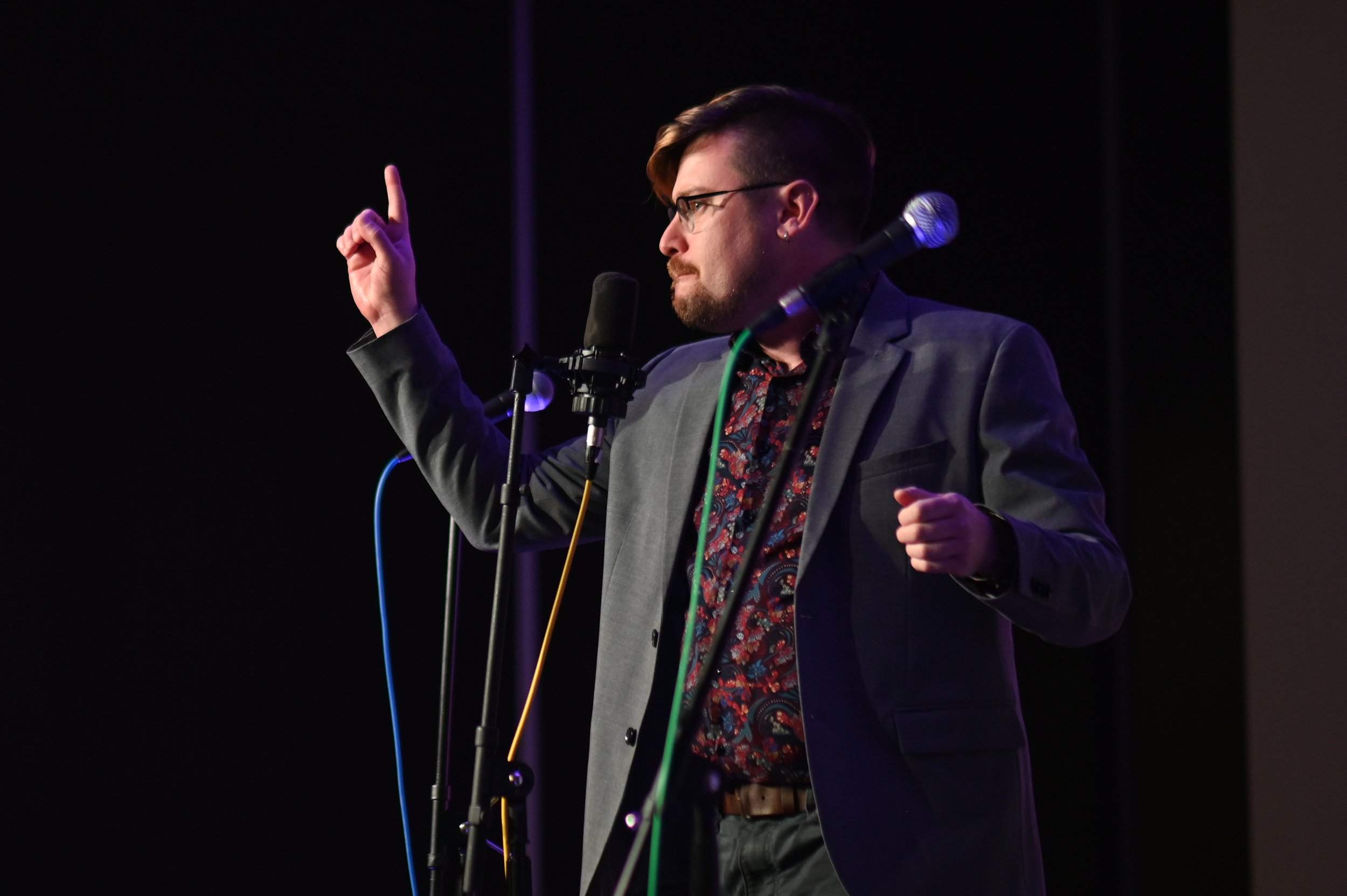Making insightful observations is a key component of being a good scientist, or journalist, or filmmaker. Come to think of it, many careers rely on the ability to notice the details. In this week’s episode, both of our storytellers are keen observers of human and animal nature.
Part 1: Documentary filmmaker Caitlin Starowicz is so focused on making her movie about endangered Mountain Gorillas a success that she fails to see what’s in front of her.
Caitlin Starowicz is a director/producer for film and television. Her work focuses on the climate crisis, animal rights, women in STEM, and intersectional feminism. Her films have twice nominated for Best Documentary in Canada at the Canadian Screen Awards, and once for Best Documentary Director in Canada.
Part 2: For a story on escape rooms, journalist Danny Wicentowski studies the trials, triumphs, and strategies of the players.
Danny Wicentowski is a journalist and storyteller in St. Louis. Now a producer at St. Louis Public Radio, Danny worked for more than eight years as a staff writer and investigative reporter for St. Louis’ alt-weekly the Riverfront Times. In 2020, he co-produced and hosted the podcast American Skyjacker, chronicling the life and crimes of plane hijacker Martin McNally. Danny lives in Bevo Mill with a black cat and many notebooks.
Episode Transcript
Part 1
This is such a privilege. I want to tell you this story about when it was 2018 and I am 20 hours into my flight to Rwanda. I haven't slept a wink because I am obsessively reading, rereading and then re‑rereading all of my notes because I'm about to make a film about endangered mountain gorillas and Dian Fossey who's the first scientist to ever study them in the wild.
I'm a documentary film producer and my passion is telling stories about strong women in science. So when I was given the opportunity to co‑direct a film about the great apes and some of the greatest women in science, I was over the moon.
And then I was terrified, because failure is not an option.
I have made documentaries before but this one is huge. It's world class. It's narrated by Sandra Oh. Yes. And I want to do a great, great job. Not to mention that I'm co-directing with my father who is a famous filmmaker. So, like no pressure at all to prove myself.
Caitlin Starowicz shares her story with the audience at Factory Theatre in Toronto, ON in January 2023. Photo by Glenn Pritchard.
And then also there is just one chance to film these gorillas because they are so endangered and they're so hard to find. Again, no pressure at all. One chance.
In 1985 when Dian Fossey died, there was only 200 mountain gorillas left in the entire planet. They are incredibly endangered and they are also very, very hard to find. They all live in the mountains, the volcanoes between the border of Rwanda and the Democratic Republic of the Congo.
We see these mountains and our guide, Kevin Innocent, points to the top and he says, “That's where we're going tomorrow. It's not going to be easy.”
And I say, “That's fine. I'm gonna be cool. It's not a big deal,” only half believing myself because I'm like relatively young and like relatively fit. Plus, I have a very cute windbreaker and like super cute hiking boots that I bought so I feel good about myself.
We leave at daybreak and it's after a huge deluge. So much rain. This is a tropical climate so, when it rains, it rains. We are accompanied by four rangers who are carrying AK‑47s. I'm worried and I say, “Are the gorillas that dangerous? They're vegetarian.”
And they say, “Oh, no, no. Don't worry. Don't worry. It's not for the gorillas. It's in case of kidnappers.”
And I'm like, “What?” These were not in my notes.
Caitlin Starowicz shares her story with the audience at Factory Theatre in Toronto, ON in January 2023. Photo by Glenn Pritchard.
So, we leave and, of course, you have to remember that as we're going up this volcano, we have to carry all of our film equipment on our backs because there's no roads. So we have 14 huge cases of film equipment. We have ten people helping us carry gear. We have four crew. We have rangers. We have guides and we have a young Rwandan scientist named Nadia Niyonizeye. We look like a bit of a strange sight walking through this town of Musanze with all this stuff on our back, until we come to a stone wall that we have to climb to get into this dense, dense forest.
Nadia and I are gabbing away. We're the only two women on the crew. We're getting along famously. She's the kind of scientist that will say like, “I was studying two gorillas once.” And you think she's going to say something really sciencey and then she says, “And I realized he wants to kick his brother's ass because he stole his girlfriend.” It's like a very Kardashian interpretation of gorilla life and I am there for it.
So we're hiking through this dense forest, grass up to our knees for an hour and I'm thinking, “I am awesome at hiking volcanoes. I'm really good at this. This is fun. I'm handling this.”
And then our guide turns back and says, “Okay, we're almost at the foot of the volcano.” Then it's like the world tilted to a 45‑degree angle. We were up to our knees in mud. There were jagged rocks everywhere. They're hacking away with machetes because you can't see more than one foot in front of you. It's so difficult.
We did this for six hours, but it felt like 60. And then we did it again. I'm getting worried because we haven't seen a single sign of any gorillas. I'm covered in mud from my no‑longer‑cute windbreaker to my no‑longer‑cute hiking boots. I'm getting loopy from the altitude because it's getting so high and I'm getting worried. We haven't found any gorillas. What are we going to do?
Just when it feels like we can't go on anymore, we reach a clearing. It's almost like the birds became quiet. I stopped trying to look cool. I had been keeping it together trying to be positive for the crew, whereas inside I was just losing it.
We had arrived at Karisoke, which is the former site of Dian Fossey's research camp. I see the destroyed ruins of her cabin and I see the hand marked graves of the gorillas that have been murdered by poachers. It's Titus, Uncle Bert, Macho, Kweli, Digit, and then the last grave is Dian Fossey who was murdered by poachers in 1985.
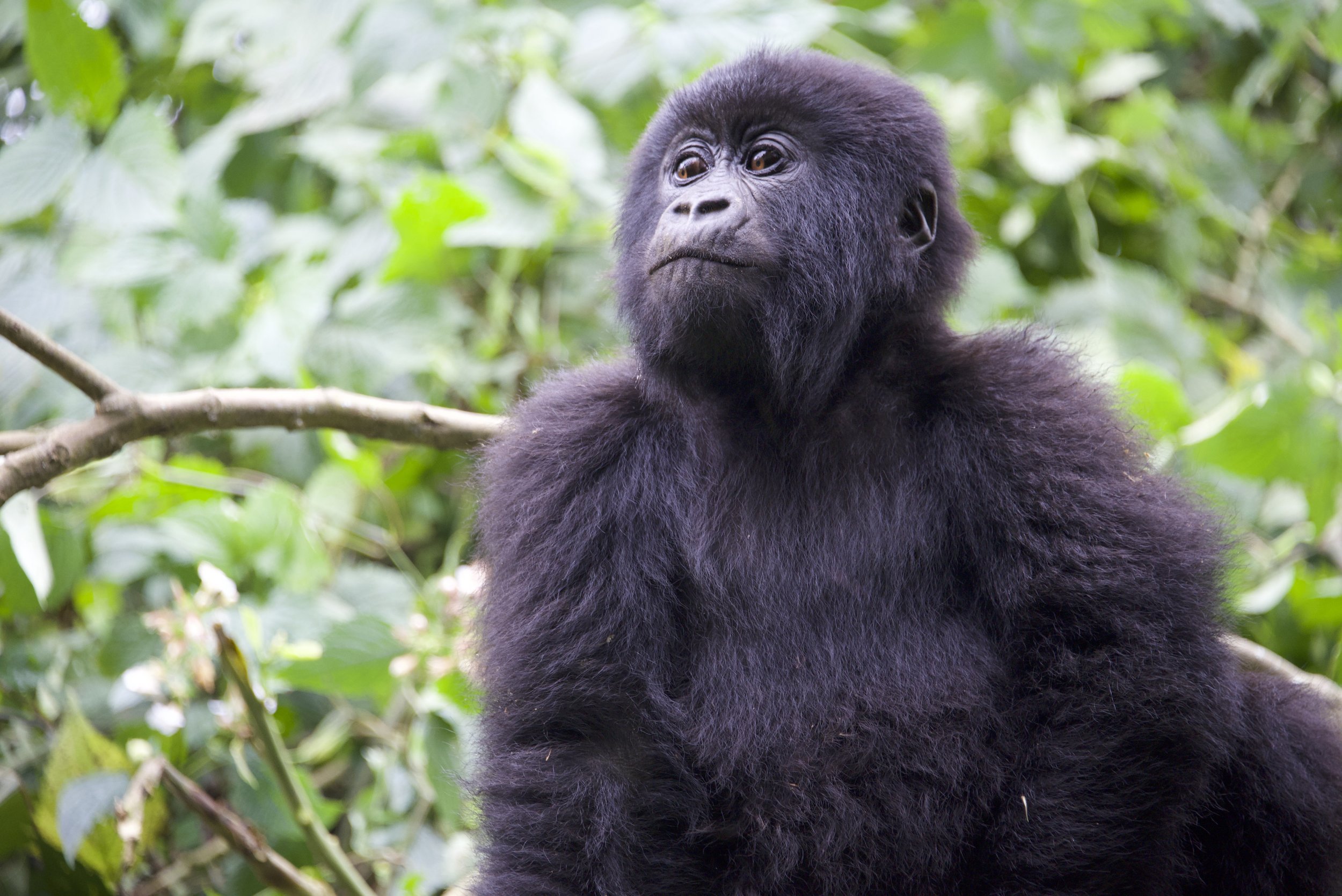
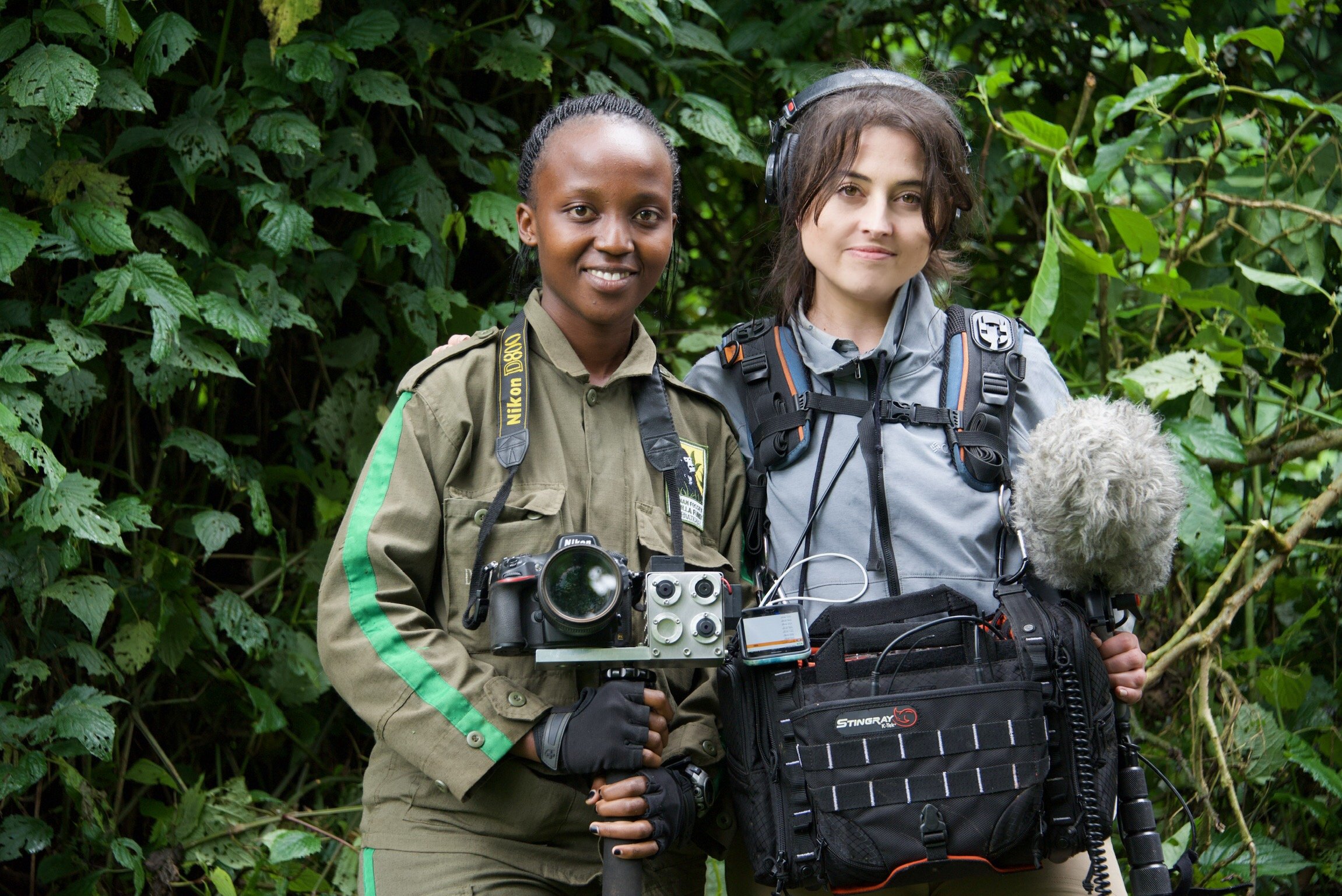
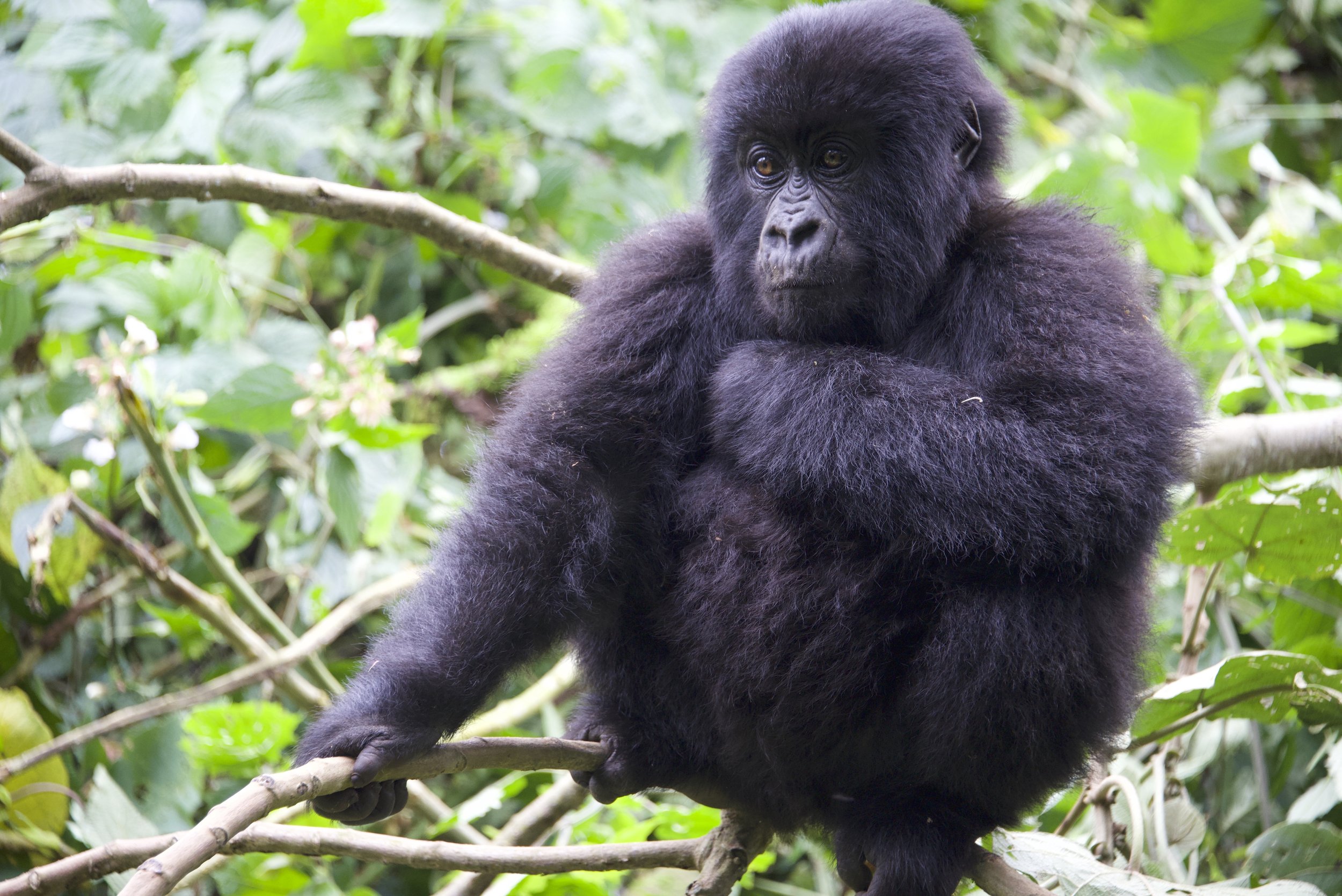
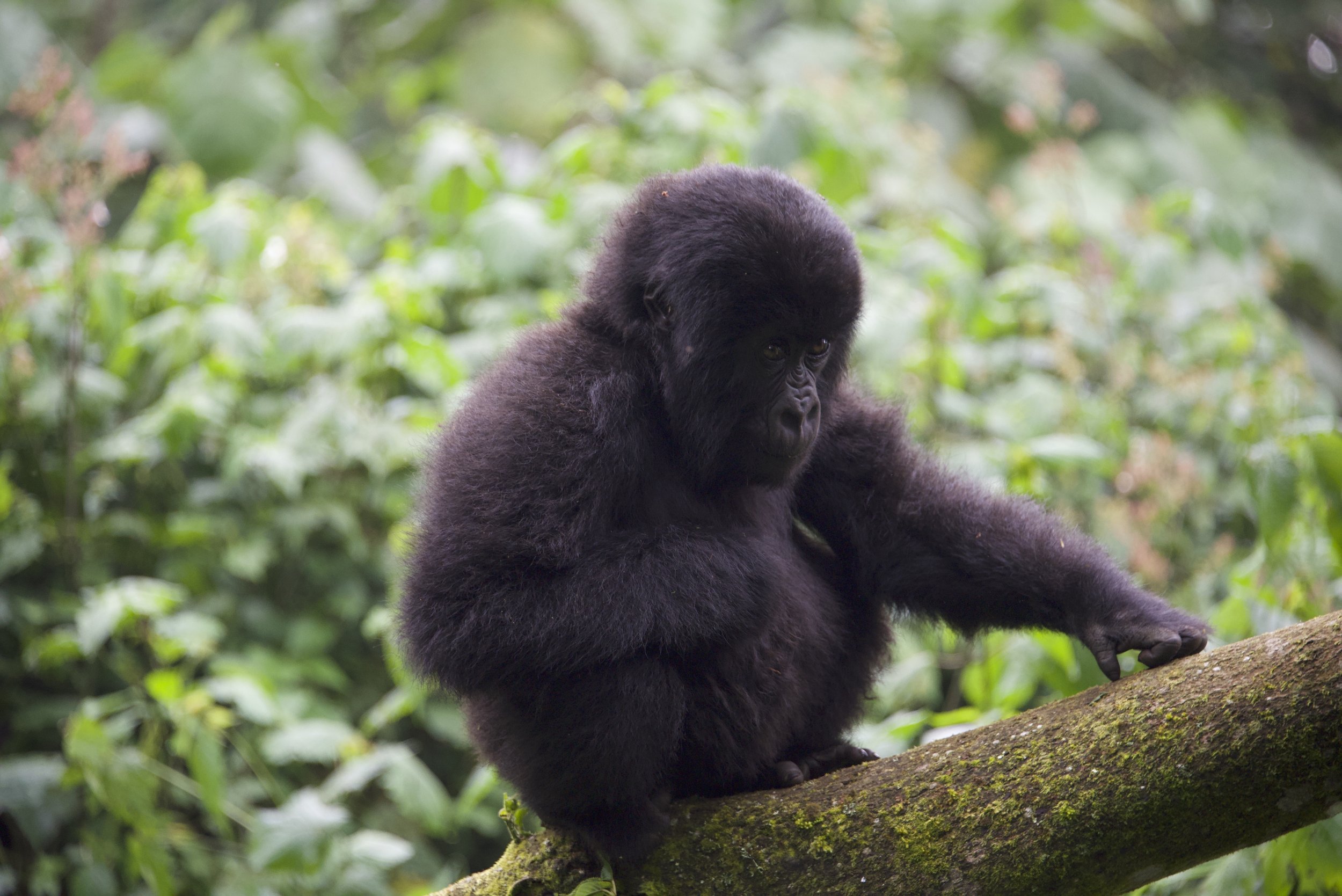
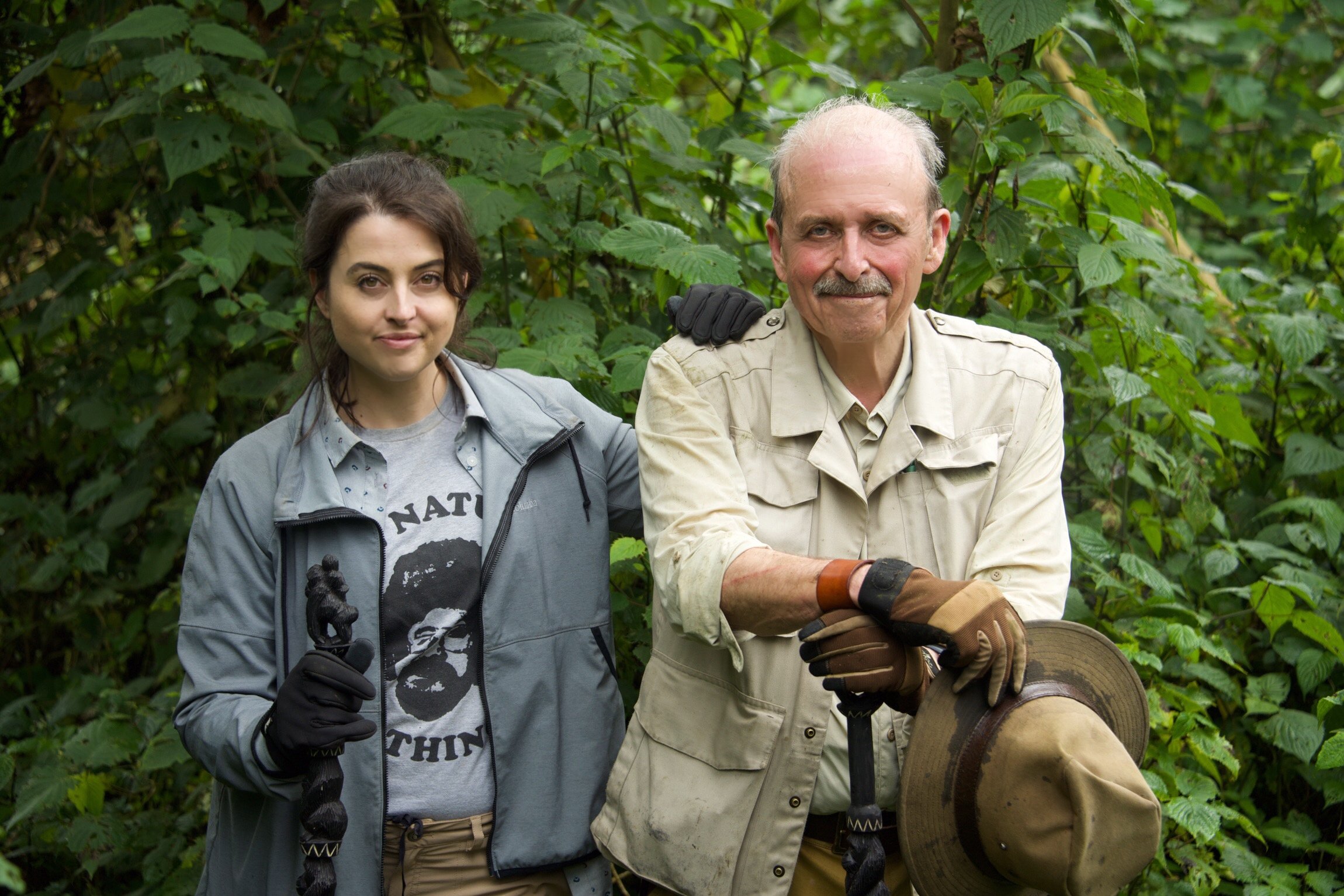
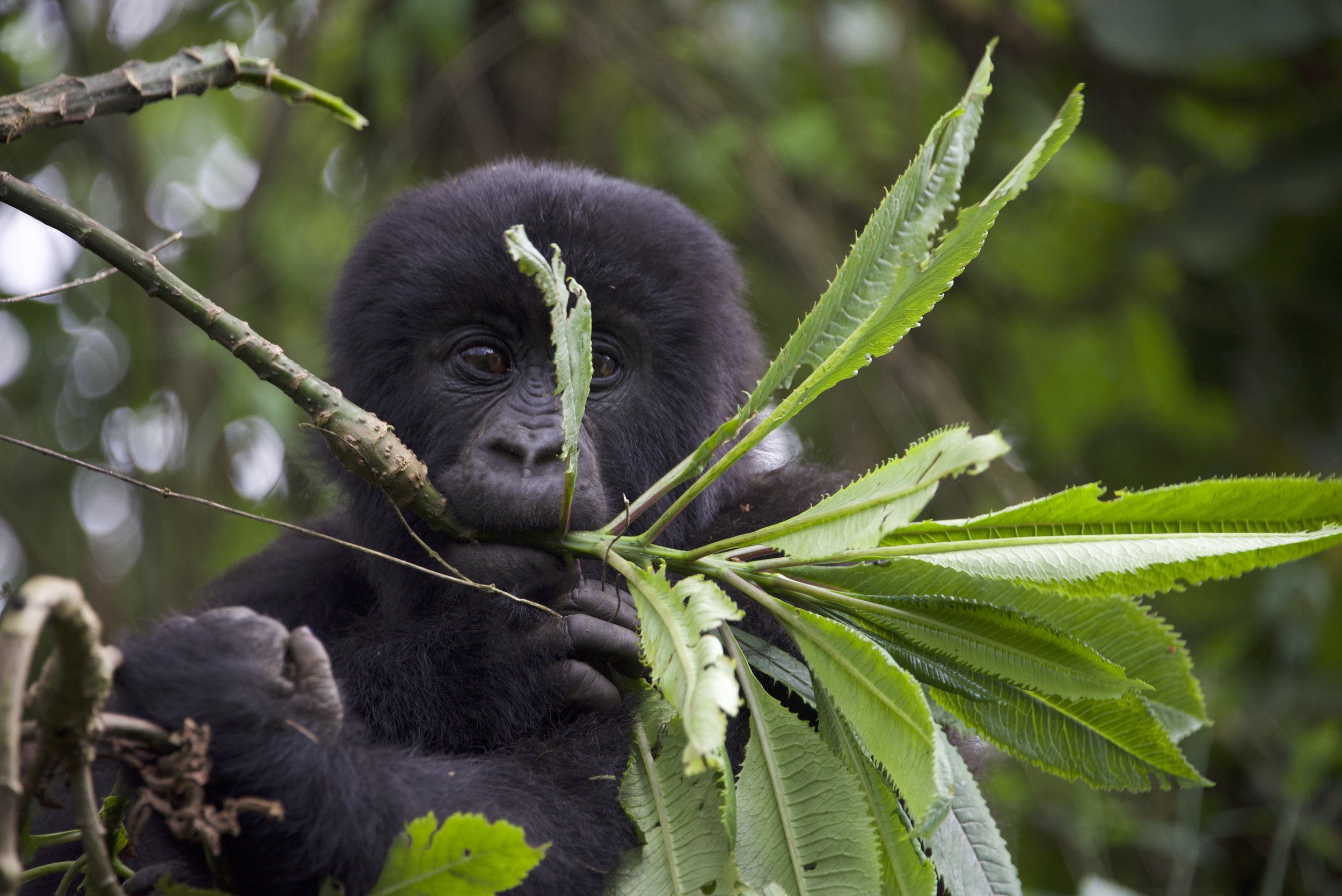

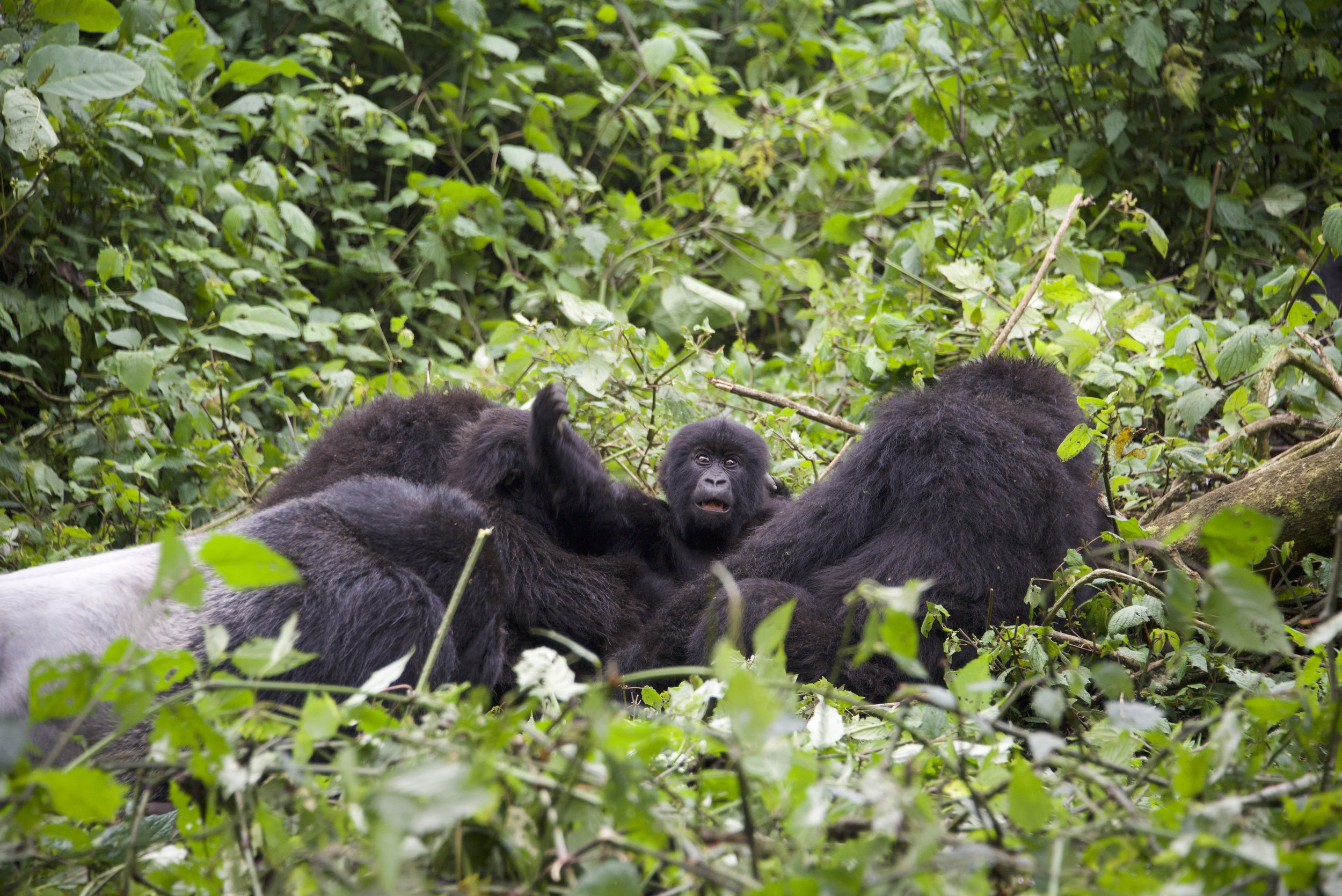
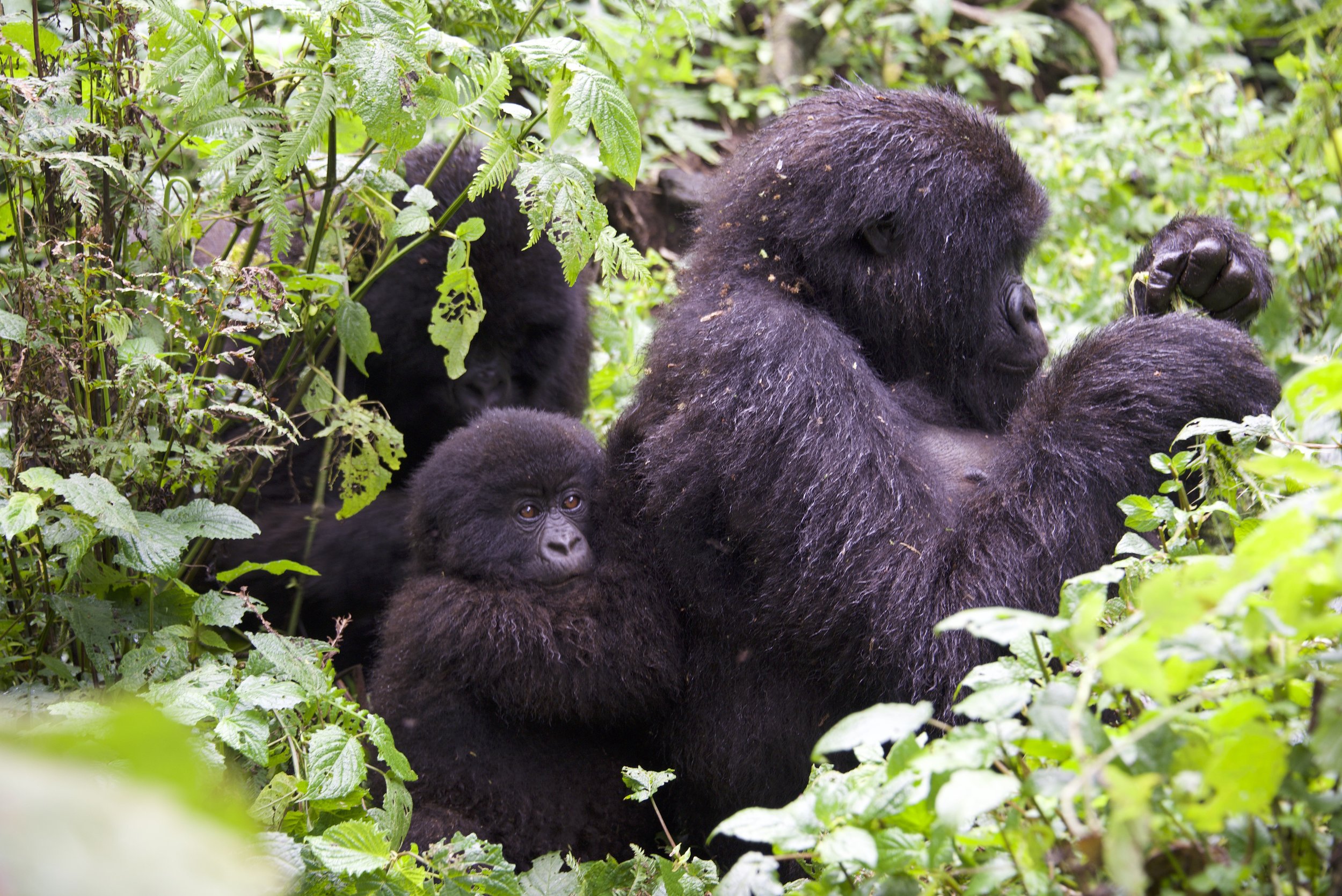
She's buried next to her favorite gorilla, Digit, who was the first gorilla to ever come and research her, to come and investigate who's this strange white gorilla. He did his own scientific research. She was studying them and he was studying her.
It's then that I am just overcome with emotion. I feel feelings of guilt, shame, powerlessness, because here I am thinking about my stupid film and I'm surrounded by graves of murdered gorillas. And I felt selfish.
It's then that I hear Nadia say a quote from Dian Fossey. “Once you realize the value of all life, you dwell less on what is past and concentrate more on the preservation of the future.”
We sit in that moment for a while with the spirits of these guerrillas around us, with the spirit of Dian around us, and I realize that no matter how hard this journey is, we have to show the world about these endangered gorillas so we can help try to save them.
So we put our packs back on our backs, we climb four more hours up the volcano and every muscle in my body is screaming. My back is aching. I am so tired. It's getting to the point where two of the guides have to hold me up by my arms because I keep falling down to my knees because I'm so delirious from the altitude.
I'm starting to think, “We've come this far and we've found no gorillas. We failed. We haven't found any of them.”
I'm shuffling behind Nadia, looking down in the mud, trying not to fall down for the 300th time and she stops. I almost bump into her.
She says, “Do you see?”
I look around and I have no idea what she's talking about. All I see is mud. I see dirt. I see failure. I only hear my own labored breathing.
Then she slowly points up and above us is a tiny one‑year‑old baby gorilla, three feet above us in the trees. He's so tiny and so fluffy and so beautiful and so inquisitive. He's shimmying down the branch. He wants to get a better look at us.
He comes closer and closer and we're locking eyes together. And I'm thinking about him and he's thinking about me, and I can't help but remember Digit. This little baby is the legacy of a species that has been hanging on despite all odds.
Caitlin Starowicz shares her story with the audience at Factory Theatre in Toronto, ON in January 2023. Photo by Glenn Pritchard.
He gets a little closer and I can tell he's studying me. I can tell he's thinking, “Who's this white gorilla? What's she doing in my forest? And where'd she get that cute windbreaker and fab hiking boots?”
Then I hear Nadia go, “Psst,” and she nods her head to the right. We go over to a little clearing and there's the whole family. Huge Silverbacks over 400 pounds. Mothers with infants, teenagers, uncles, and they're all so gentle.
The big Silverbacks are taking care of the babies, patting them gently. And the little baby that I was engaging with goes over and plays with his friends with no knowledge of this graveyard that we have just visited.
We start filming and it's magical just how similar they are to humans. Just seeing mothers breastfeeding, infants throwing temper tantrums, lazy uncles napping.
The little baby is being an absolute brat. He's pulling his brother's hair and just being like a total hellion.
We film for hours until the family decides that that's enough screen time for today. It's time to go find a place to sleep for the night. I make eye contact with that little baby once more and he yawns. I see his mother put him gently on her back and the family disappears again into the forest.
And there I am just in silence and total awe. I can't believe the experience I've just had. It's then in that moment that I really understood that quote from Dian Fossey. “Once you realize the value of ‘all’ life, you dwell less on the past and concentrate more on the preservation of the future.”
Part 2
It is a dark and stormy night in St. Louis. It is a Saturday in April 2014 and I am doing the same thing I've been doing for the past several weekends. I am in a small, nondescript office building in the Central West End. I am locked in a room with strangers and I'm watching them fail.
It's an escape room. As a reporter, it's the first escape room I've ever heard of coming to St. Louis and that's news, news which is the thing ostensibly that I do as a staff writer at the Riverfront Times where I'm barely a year into my first professional journalism job.
So much of my job is summarizing. I go to meetings. I spend hours there. I write what was said. I figure out what was alleged, what was cautioned, what was worried, what was declared, what was added. All of the important verbs that you need to know the news.
But this story, this escape room, I immediately know what I want to do. I don't want to interview the people who've been in the escape room. I don't want to even go in the escape room myself. How boring that would be. How blasé. No. I want to be in that room not once, not twice. I want to be in there over and over again.
Five times. Ten times. I want to see the entire army of humanity throw themselves at the same puzzles. I want to become a master of this space. I want to know what they're going to do before they do it and I want to know the mistakes they're going to make before they're even considering it, because this, this is the fly on the wall fantasy for a reporter.
Danny Wicentowski shares his story at the Public Media Commons in St. Louis in February 2022. Photo by Joe Martinez.
I'm going to be the primary source. I will see the action. I will see who said what when, when the decisions are made. I will be coming in later to reconstruct the sausage from all the dropped quotes and things that people put up and then tracing it back to the sausage factory. No. I'm going to see it made.
I have to tell you, this idea it becomes kind of an obsession for me, because it seems to break the code. It breaks the log jam that I just feel in my job. It'll be like that quote from Watchmen. “I'm not locked in there with them. They're locked in there with me.”
It has a perfect ending. The ending writes itself, the perfect escape. All I go to do is just watch and write notes. And I'll have every scene, every conflict, the ups and downs, the disasters, the victories, it's a dream.
I get in those rooms and it’s turned out to be incredibly easy to convince the creator of this escape room to let me just piggyback along and watch as many people as I can stand.
So, I start going to the escape room again and again. I have to tell you, I do get to see the thing that I love to see, which is choices being made. I love to see that on two sides of the room, two completely different groups will suddenly have this lightning strike and they'll understand the code to one puzzle fits with the cipher to the other and a wordplay actually fits with a puzzle that they had discovered earlier.
You can see these incredible strands of friendship, of connection, of even tension with people working together. But I have to tell you that, for every moment of people working together, it is a drop in the ocean of people falling apart. The mask is off in these rooms. There is no cohesion. There is no teamwork. I wish I could tell you why.
Was it smart people only listening to smart people or dumb people finding the only other dumb person there? It's not so simple. It's not so simple.
I watch a couple in their 30s insistently tell their nine‑year‑old son, just as the door is about to be locked, “Stand in the corner. Don't bother us while we're doing this.”
Of course, they're not listening to him. They're not listening to him when he is the only one in the room who can interpret the clue correctly to a puzzle and they spend 10 minutes on something. Of course, they fail.
There's the woman who gets the attention of the entire room at one moment and brings them away from the pile of Scrabble tiles and locked black and white boxes and she points at the ceiling, tracing the lines connecting the panels together. She's telling them, “Don't you see it? Don't you see it?”
Danny Wicentowski shares his story at the Public Media Commons in St. Louis in February 2022. Photo by Joe Martinez.
There is no puzzle on the ceiling. There is no clue hidden there. It was in the Scrabble tiles. It's always in the Scrabble tiles. And I watched them fail. I watched them fail over and over again.
I went back and I look in my notebook that I'm writing at this point and underline, “I wonder what are they doing here? Why did they come here if they're just going to fall apart?”
That's why I'm here once again in this locked room. As the storm clouds gather outside, the door locks and the numbers tumble down and I have no hope for this team. See, it's like some of you may have some connection to when the weather gets bad in St. Louis, people just cancel events and they just turn tail.
This was the case just before the last team of the day, a team of ten calls and says, “We're canceling because of the rain and the thunderstorms and the weather warnings.”
We get ready to go home but, wait. Actually, they're not all canceling. Two people from this team of ten have decided that they are going to go for it. They are going to solve this entire escape room on their own. They're going to pit their two brains together against a puzzle that is intended for many more brains.
So, it doesn't really matter how many good ideas they have or whether they work together or whether their relationship is irreparably damaged from this moment, they don't have enough brains. They are, literally, the worst team that has tried the entire puzzle enterprise.
The numbers hit zero on yet another night. It's about my seventh team and I’ve never been exhausted by a story like this. I am just wishing I was in a city council meeting taking down hours of notes, reading a lawsuit, something where I could feel like I was accomplishing something.
I get out of that room and I meet up with the two other folks who are there. There's the co‑creator of the escape room. His name is Nir. There's the photographer for the Riverfront Times, Tom Carlson. And I look at Nir and Nir has this expression of disappointment on his face. The thing is that this is actually Nir's second escape room attempt.
Only a few months before, his pilot, though, 12 teams, more than 100 people, not one was able to solve the problems and puzzles and escape as he intended. And the one that did, they took the final puzzle, a large chess piece, a chess set with a magnetized key inside. You would have to play a game and do a whole thing. Then they just took the board and shook it upside down, like they were trying to get a pick out of a guitar, and they broke it. They broke the final puzzle and that's how they got out.
And Nir's expression mimics mine, because I came into this already knowing the story I wanted. And I'm not getting what I wanted. I'm starting to wonder if I'm here watching people fail, is Nir one of those people? Am I one of those people? Am I the piece that's out of place? Is the observer somehow throwing things off?
I don't say a word to these teams in the room and they don't say a word to me, but I'm there. I'm shifting atoms. I'm being hit by ion rays. Who knows what I'm doing?
I worry that Nir is going to pull the plug. Maybe I should pull the plug.
Outside, the sky in St. Louis open up and the rain pours down and the thunder cracks. Nir, I and Tom get into the elevator and share a morose moment of not getting what we want. Of not having the control maybe we thought we knew, that we thought we knew we really had.
I start to think am I learning something new about myself in this moment. But before that, I learned something else. I learned what the sound of an elevator dying sounds like. It's actually not really a sound. It's the absence of a sound. It's a hum that's stopped humming. It's a machine that is suddenly… *sigh*
So we stand there, three grown men, suddenly sweating in an elevator whose doors are not open on a Saturday night during a thunderstorm and we're trapped.
Now, if you're ever in this situation, you should do what Nir did, which is he's the master of the escape rooms. You should always try the obvious. Try the front door. Try the door. It might not work but it's worth doing.
The buttons don't work. The obvious is not working. The emergency buttons don't work. We have no service in the elevator.
“When's the next time someone's going to be around here?” That's the thought in my head. How many hours? 24? 36? There's nobody in this office building at all.
I wonder about actually pushing open the doors, but then I get a sudden vision of what if the elevator starts moving again and I'm suddenly starring in an unwanted reboot of Two‑and‑a‑Half Men.
So we just stay there in this static, this panic. Sometimes, that's all you need to do because something amazing happens. The elevator actually starts moving again. Well, first it moves kind of sideways, which felt weird. It was like it shifted into some other dimension, but it's a dimension where we were moving, which was good.
So, we're moving down. The third‑floor light turns off. Now it's the second‑floor light. We're going to hit the ground floor next and we'll be done. We hit the ground floor and we're still moving. There's only three floors in this building but we are definitely in motion.
The elevator is still going down for another 20 seconds and it halts. There's no light on the floor levels. We are off the map of the building.
Again, I'm wondering, 24 hours? 36 hours? Where would they even find us now? It's like a computer's reset and it's just gone to its initial state. That we're in a mechanical blue screen of death and it sent us to a grave, it seems like it.
So, again, we are sitting there with silence. There's no puzzles here. There's no riddles to solve. I look up at the ceiling and I think about John McClane in the movie Die Hard. Really, any movie with an elevator problem. There's a hatch, right?
So I'm looking up there and I'm trying to follow… well, there's always a hatch. How do you climb out of there?
After a while, I just feel foolish because there's nothing on the ceiling. There's no way to get anywhere. We're trapped. And I'm not John McClane and we're not in the movie Die Hard and there's no bathroom and there's no water and I'm trying not to think about what they'll find when they open those elevator doors. When? In 48 hours? Who knows?
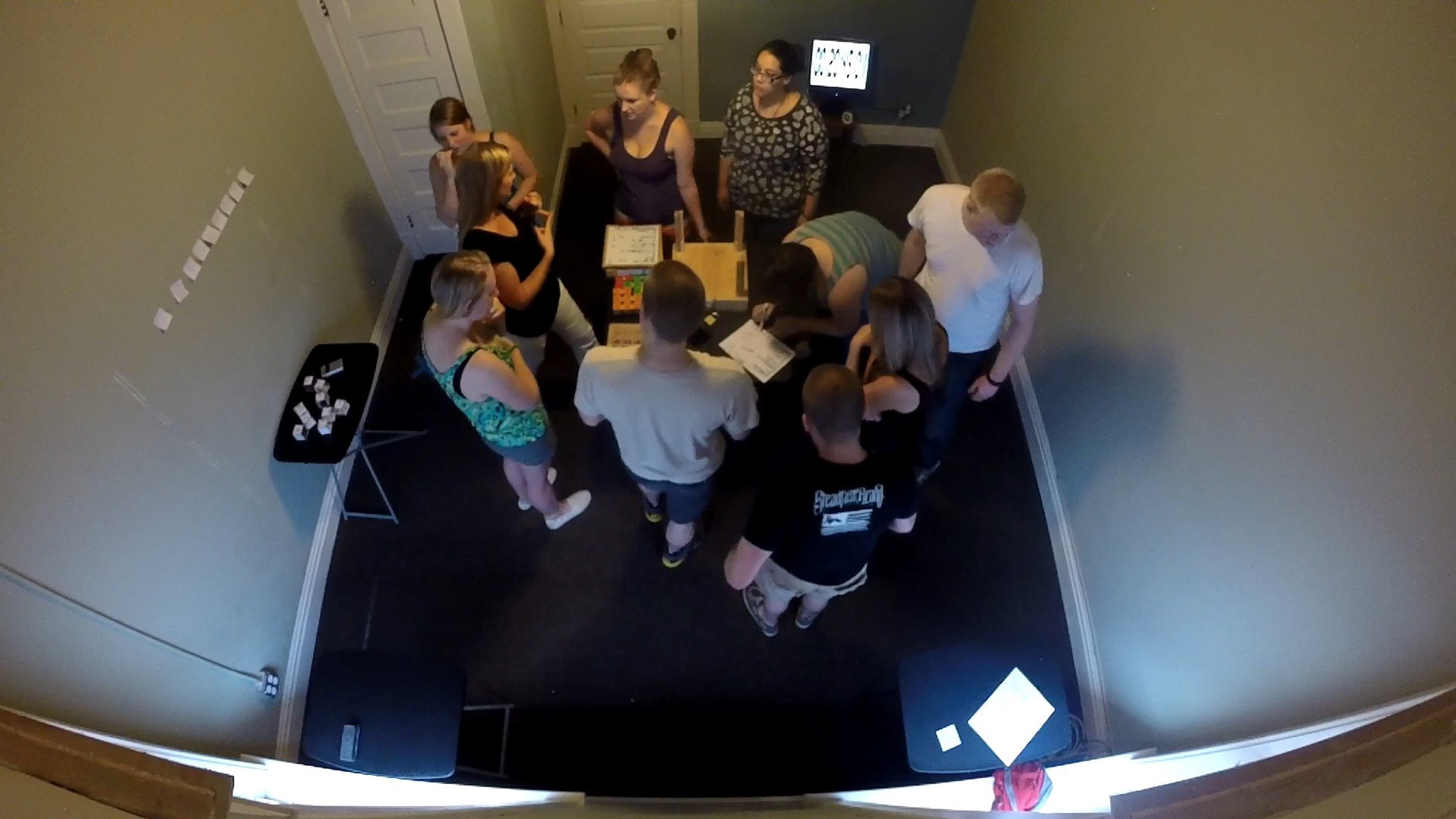

So, the tension breaks. I don't even remember having a discussion about this but, suddenly, our hands are in the crack of the door and we are forcing it open to find out where we are. That's really the key variable. Where are we? If you can solve for that, you can have a path to go.
So, I await the first real actionable piece of evidence. We are faced, as the doors open, with a very confusing sight. We are faced with a wall of boxes. All the way from the ground up to the ceiling, cardboard boxes. Well, that didn't help. It doesn't help us know where we are. We are still lost.
So we start taking the boxes down and start to notice there are cleaning fluids. There's a mop in the back I can see somewhere. It's like Clorox sponsored in Edgar Allan Poe novel a little bit. Still not really sure why we're there.
But we unload the boxes into the elevator. It's the only place to put them, and we create some men‑sized holes in the boxes and we venture out into the darkness. There's a small room in a small hallway, some more cleaning fluids, boxes, mops.
Okay. We have our first important variable. Where are we? We're in a closet. We are in a closet that is connected to an elevator that is connected to a shaft, connected to a building that has not the same number of floors as the building where, it turns out, where we are.
Okay. These pieces are not actually connecting. It's not going so great for my mental map putting all the pieces together. And there's another problem, and it's the one that is starting to really concern me because I feel like I'm losing my mind. I'm hearing music. And the music isn't coming from the elevator. It was coming through the boxes.
At first, I thought, “Oh, it's the enclosure. It's just the panic.” But the music is real and the music is it's dance music. It's tango music.
We really have no choice but to go forward. And so the three of us approached the door to the closet, the only thing which we know to exist in the universe, and we open it. We venture forth and we're bathed in a soft red light.
I looked down and a few dozen feet away I can see couples, about ten or so of them, dancing, dancing to the music. They are totally oblivious to us, just three, grown, sweaty guys who've just materialized out of a closet. We are aliens in a strange land and nobody's even here to greet us.
But we turn and there's actually a bar right across from us, just ten feet away. There's a middle‑aged woman behind the bar and she looks at us. She has this expression like she's embarrassed for us, like she's asking, “What are you even doing here?”
She doesn't say a word. We don't say a word to her. And, without any discussion, we shuffle out toward the sound of the storm and the rain and we leave.
Of course, if you turn around and look at the building, there's no mystery. There's an office building and, next to it, there's a dance studio with a walk‑down kind of stairs. Maybe at some point these buildings were connected and there were some renovations and things were walled off. A closet was created and a floor was erased.
We go back to our cars and I laugh, because how could you not? It was so much. But I go home that night and I go to work on my story.
A few days later, well, rather I should say about a week later, this process continues. This self‑torture. Going in the room, watching the failure, waiting for an ending that just won't come but, eventually, it does.
The final team, number 27. We're talking more than 200 people who have burned out on these exact same puzzles. The very last one, a team made of mostly high school wrestling coaches and their significant others.
Danny Wicentowski shares his story at the Public Media Commons in St. Louis in February 2022. Photo by Joe Martinez.
I watched those last minutes tick down. No team has ever gotten this far to be confronted with the final two locked boxes covered in strange Eldric symbols that they do not have time to solve and which they do not have the energy to commit themselves to. I've seen this before already. I've seen a hundred people lose their will and resign themselves to failure.
But not this time. This time, as a wrestling coach hands his girlfriend one of the boxes, something incredible happens, something magical. In that moment, the two boxes, as if transported by fate, they pass over each other just so, just as they were designed and built to. They align but not on the outside. On the inside. Where the magnets that have been so carefully placed there with the intended result that has yet to come to any fruition.
Those magnets kiss and they unlatch. The box opens and there's the key. And there's the woman, the girlfriend of a high school wrestling coach who has just tried shaking that box like he's hoping it breaks, and there's the key. They have no idea why.
But they're free. They're free and the door opens. There's numbers on the clock and there's been an escape. There's been an ending. Finally.
You know, control is such an alluring thing. Nir thought he had built the perfect escape room and I thought I'd found the perfect story. And somewhere, some engineers thought they had built the perfect elevator.
But just because you can see all the pieces doesn't mean that you know what they are, what they mean, where they're placed, what the big picture is, what it looks like outside. Control is really like a locked room. The only one who can get you out is you.
Thank you.




